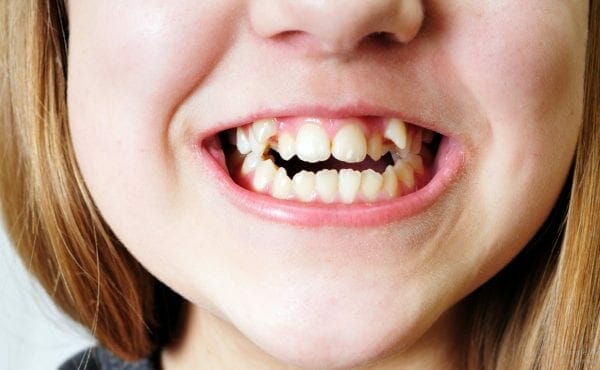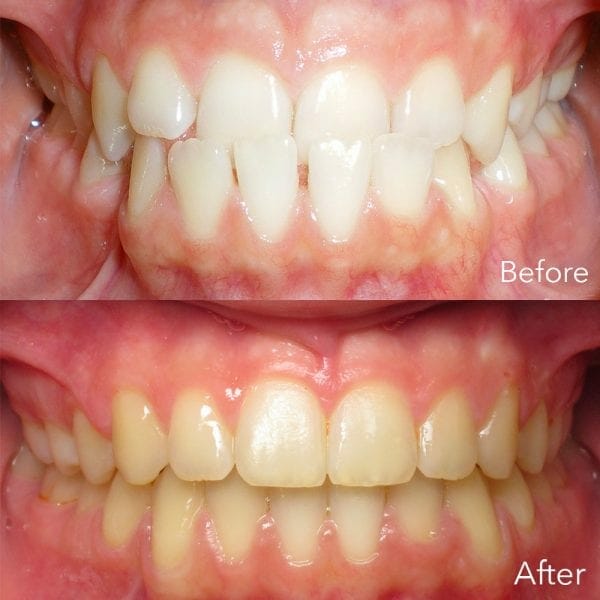Why Childhood is the Best Time for Treatment
In today’s world, getting braces or other forms of orthodontic treatment is commonplace. It is almost seen as a natural part of growing up for many children, given that they are the most common demographic treated by orthodontists.
Despite this fact, many parents are left wondering if their child even needs orthodontic care in the first place.
Most orthodontic issues are blatantly obvious, like crooked teeth or a misaligned jaw. Yet, a child may appear to possess perfectly straight teeth and still have underlying issues that remain undetectable to an untrained eye.
That is why parents should schedule their child at approximately seven years of age for a free, no-obligation consultation with expertly trained, board-certified orthodontists like Dr. Redford and Dr. Burke. This is true even if there is not a blatantly obvious problem with the alignment of the child’s teeth or bite. Read about the types of conditions as well as view just a few of the many success stories of our young patients who needed orthodontic treatment and their before and after braces pictures.

Burke & Redford Orthodontists pride themselves on being able to provide exceptional care while helping patients achieve optimal oral health and a beautiful smile.
A consultation may be scheduled online through our website or by calling our offices at (951) 699-8011. We specialize in orthodontics for patients of all ages at our private practice, with locations in Temecula and Lake Elsinore, California.
Did You Know the American Association of Orthodontists Recommend
Bringing in Your Child BEFORE the Age of 7?

What are Signs a Child May Need Braces?
Parents should remain vigilant in observing not only their growing child’s state of oral health but their behavior and habits as well.
Observing certain things will provide telltale signs about whether the child needs to be seen by an orthodontist sooner rather than later. Our doctors recommend parents bring their child into the office for an evaluation if any of the following are seen:
- Crossbite of the front teeth (the upper front teeth sit behind the lower front teeth)
- Crossbite of the back teeth (the upper back teeth sit to the inside of the lower back teeth)
- Crowding (teeth are overlapping one another or too close together)
- Open bite (a vertical space is present between the upper and lower front teeth when biting down on back teeth)
- Protrusion (front teeth that tip excessively forwards; also known as “buck” teeth)
- Deep bite (the upper front teeth overlap the lower front teeth excessively in the vertical direction, often resulting in the lower front teeth not being visible when biting down)
- Underbite (the lower front teeth sit ahead of the upper front teeth when biting down)
- Spacing (the teeth are too far apart)

Additional Habits and Symptoms
Besides the signs mentioned above, there are some additional things to look for in children when it comes to detecting potential orthodontic issues:
- Difficulty biting into or chewing food
- Grinding or clenching teeth
- Speech impediments or lisps
- Baby teeth that are lost too early (before six years of age) or too late (after 12 years of age)
- A lower jaw that shifts to one side when biting down
- Mouth breathing
- Unbalanced facial features
- Biting the inside of the cheeks or the top of the mouth
- Using a pacifier longer than normal
- Habitually sucking on fingers
While every habit or symptom listed is not inherently indicative of a problem, it is undoubtedly a sign that the child should be seen by a reputable orthodontist. This is recommended to ensure that if a problem does exist, it is treated appropriately and promptly.
When Should Children Receive Their First Orthodontic Consultation?
While it is true that people can receive orthodontic treatment at any age, whether they are 7 or 78, it is a fact that kids come into the orthodontist’s office more than other age group. This is for good reason.
According to the American Association of Orthodontists (AAO), children should be seen for their first orthodontic consultation by the age of 7. Because the mouth and teeth are still in a period of growth during childhood, their teeth and bite are much easier to move or adjust. This means there are certain types of treatment that can be done during childhood that cannot be done later in life.

Why Do Children Need a Consultation?
As the first step in orthodontic treatment, consultations serve an important purpose. Consultations provide patients with a no-strings-attached, one-on-one examination from an orthodontist.
During this thorough examination, the doctor will be able to spot even the most concealed problems related to the mouth or jaw region.
Orthodontists are trained to pinpoint more than just current problems. They can also recognize developing or future problems based on the patient’s current stage of development.
By bringing in a child at the recommended age of 7 years old, potential problems can be identified and then a plan made to deal with them at the appropriate time. This helps to ensure the best possible outcome. In many instances, the orthodontist will advise against starting active treatment at age seven. Obtaining an early set of baseline records is extremely valuable, however, and can help guide how aggressive or conservative future treatment should be when they are compared progress records taken at future recall appointments.
In cases where active treatment is recommended for a young child, these early consultations allow for the ideal opportunity to correct issues before they become worse or get to a point where more extensive or invasive treatment will be required.
These reasons and many others reinforce the fact that children should be seen earlier rather than later for orthodontic consultations.

What is an Orthodontic Consultation Like?
Some children become excited at the thought of wearing braces since they are strongly associated with growing up. On the other hand, many children feel a sense of apprehension, given that it is a new and unfamiliar experience.
Despite how a child may feel initially, the first consultation with Dr. Redford or Dr. Burke will be sure to make them feel much better!
The opportunity to ask our doctors questions in a relaxed setting and get a better understanding of what it means to receive orthodontic treatment helps in alleviating any concerns. This meeting with the doctor tends to help kids become more comfortable with the idea of treatment.
During the appointment, one of our orthodontists will thoroughly examine the mouth, teeth, and jaw relationships of the patient for discrepancies. If a problem is detected, the doctor will go over what a typical treatment plan will look like given the patient’s specific case.
At this time, any questions or concerns regarding treatment will also be discussed. After a structured treatment plan is decided upon jointly by the doctor and patient (or parent if the patient is a minor) treatment fees, including any applicable insurance benefits, will be outlined. Appointments to start treatment can then be scheduled.
If you think your child may need orthodontic treatment, Burke & Redford Orthodontists are here to help. Our board-certified doctors offer complimentary consultations to all potential patients in either our Temecula or Lake Elsinore office. Zero-interest financing options are available, too.
Please give us a call at (951) 699-8011 or visit our website to schedule your free orthodontic consultation today.